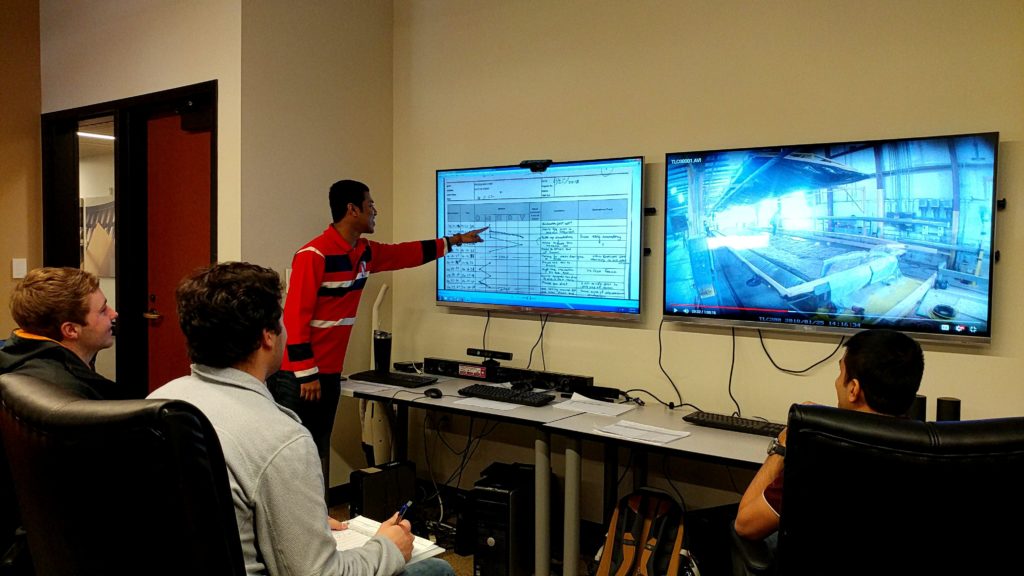About the lab
The Natural Interaction Lab (NIL) is used for the design of work, interfaces, and training to improve the performance and safety of humans in manufacturing and supply chain environments. The NIL is equipped with a variety of supporting technologies to enable exploratory and applied research. Examples include Virtual Reality headsets, depth sensors, and motion sensors. Additionally, performance computing stations are provided for video and data analysis, simulation, and prototyping.
Research
- People-centered work design: Work is designed from the perspective of employees, to guarantee balanced workload and reduced ergonomic load per person. Video analysis software are used to develop person-machine charts and to analyze load and posture. The improved work design is simulated and validated using software, which provides the basis for onsite pilot studies.
- Training technology: Virtual environments and pyramid holograms are explored as examples of training strategies for adopting new work methods and for disseminating fundamental concepts in industrial engineering.
- Visualization of Standard Operating Procedure (SOP): Novel methods of delivering the SOP to the manufacturing line are investigated. For example, an optimized packing solution was developed for a government assembler. An animated rendering of the SOP was generated specific to each assembly station and provided the basis for adoption of the new practice with reduced lead time.
Sample publications
- Sharma, K. (2020). Ergonomic Workload Balancing. Master’s Thesis. University of Tennessee.
- Akram, R. (2019). A Flexible Packing Optimization Approach to Improve Product Quality and Worker Training. Doctoral Dissertation. University of Tennessee.
- Satyanarayanan, A. (2019). A Framework to Implement Varied Learning Environment using Team-Based-Learning – Pyramid Hologram to Increase the Learning Outcome in Lean Training. Master’s Thesis. University of Tennessee.
- Yang, H., Sawhney, R., Ji, S., & Wade, E. R. (2016). Development of Walking in Place System based on Zero Crossing Algorithm. International Journal of Virtual Reality, 15(2), 30-43.
